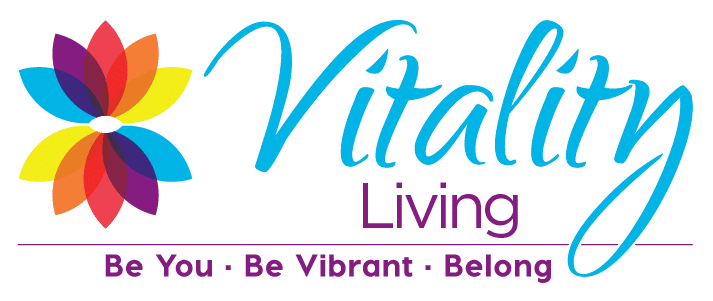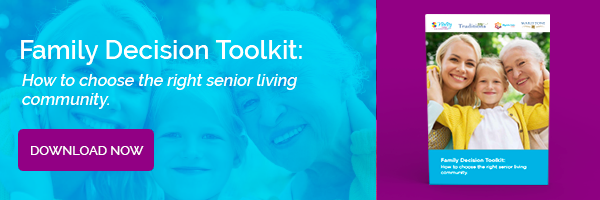10 Signs It’s Time to Consider Memory Care for a Loved One
Memory loss can be a natural part of aging. Still, when it starts to impact your parents’ safety, health, or ability to enjoy daily life, it may be time to explore a memory care community. That realization can feel heavy, but you’re not alone. Every family’s journey is different, and recognizing the signs early can help ensure your loved one gets the support, structure, and dignity they deserve.
At Vitality Living, we offer specialized dementia care at select locations throughout the Southeast, thoughtfully designed to foster a sense of connection, comfort, and purpose. If you’re wondering whether memory care might be the next step for your loved one, here’s what to look for.
What Is Memory Care?
A memory care community provides 24/7 specialized support for those living with cognitive decline, including Alzheimer’s and other forms of dementia. These communities are thoughtfully designed for safety and stimulation, featuring:
- Private or companion apartments
- Chef-prepared meals and snacks
- Medication management
- Assistance with personal care
- Cognitive and physical therapies
- Life-enrichment programming
- Housekeeping and laundry services
Vitality Living’s memory care communities go beyond basic services to create a lifestyle where residents can thrive—emotionally, socially, and physically.
10 Signs It’s Time for Memory Care
Here are the most common warning signs that indicate it may be time to explore dementia care options:
1. Wandering or Getting Lost
If your loved one becomes disoriented—even in familiar places—it can lead to dangerous situations, especially if they wander from home unsupervised.
2. Safety Concerns at Home
Leaving stoves on, mishandling appliances, or struggling with everyday responsibilities like locking doors can indicate a loss of judgment.
3. Medication Mistakes
Missed doses or double-dosing can have serious health consequences, especially with complex medication regimens.
4. Poor Hygiene or Self-Care
Neglecting to bathe, dress properly, or maintain grooming routines may reflect deeper cognitive decline in seniors.
5. Sudden Weight Loss or Gain
Inconsistent eating, forgetting meals, or food spoilage in the fridge are often signs of declining ability to manage basic nutrition.
6. Increased Agitation or Aggression
Behavioral changes like aggression, confusion, or extreme frustration often stem from underlying cognitive issues.
7. Social Withdrawal or Isolation
Reduced interaction with friends and family can result in emotional distress and accelerated mental decline. Consider communities with built-in social activities for older adults.
8. Depression or Mood Swings
Mood changes, including apathy or sadness, are common in the early stages of dementia and may worsen over time.
9. Incontinence or Mobility Issues
Managing personal care becomes increasingly difficult without support, potentially leading to accidents or falls.
10. Caregiver Stress or Burnout
When caregiving becomes overwhelming or unsustainable, it may be time to explore professional options for memory care support.
Safety and Support with EyeWatch Live™
For families concerned about safety, Vitality Living’s EyeWatch Live program provides added peace of mind. Available at select memory care communities, this innovative monitoring technology allows our staff to respond more quickly to potential safety concerns without compromising your loved one’s privacy or dignity.
With EyeWatch Live, families can rest assured knowing there’s an extra layer of oversight and support in place 24/7.
Explore Dementia Care with Confidence
When daily life becomes confusing or unsafe, taking action can make all the difference. Memory care isn’t about taking something away. It’s about offering more—more safety, more support, more moments of clarity and joy.
When you’re ready, our Beginner’s Guide to Recognizing Early Signs of Dementia can help you move forward with knowledge and confidence. Or explore our memory care communities to see how compassion, personalized support, and peace of mind come together, so your loved one can feel truly at home.



